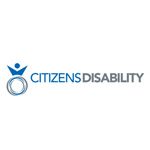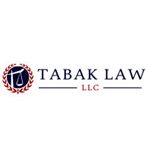Social Security Disability
If you are suffering from a physical or mental disability you
may qualify for monthly payments worth tens of
thousands of dollars a year from Social Security
Disability programs.
-12 million Americans rely on Social Security Disability benefit
-Disability payments can reach $2,788 per month
-Many medical conditions qualify for disability coverage
Check now if you qualify for Social Security Disability, it’s 100% free
Over 75,919 people checked if they qualify
Disability benefits can reach thousands a month
We value your privacy
In its most organic form, Social Security Disability (SSDI) is an insurance that pays monthly benefits to eligible workers. These refer to individuals who no longer capable of working due to either impairment or significant illness. Moreover, the impairment – or combination of impairments – should be of certain severity that a worker is disabled from continuing his/her line of work. The benefit also strictly considers the applicant’s age, work experience and, education just to name a few.

What is Social Security Disability?
SSDI is an integral part of the program called Social Security, which also pays the majority of aged Americans retirement benefits. These benefits are largely based on the disabled worker’s past earnings and are paid to him/her and to his/her dependent family members. In order for a disabled worker to be eligible, he/she must have worked in jobs that fell under or covered by the said program as per The Social Security Act, Section 223 D.
When to Apply for Social Security Disability
A person can apply for Social Security Disability as soon as he/she becomes disabled. Here are some important pointers to keep in mind:
- If applying for Social Security – Disability benefits will not immediately begin, not unless reaching the sixth full month of disability. Remember that the waiting period for SSDI starts with the first full month, which is after the date the program considers the beginning of disability.
- If applying for Supplemental Security Income (SSI) – The program duly covers the eligible individual with SSI disability benefits, and this is for the first full month after the date the applicant filed in his/her claim. It can also be the date when he/she becomes eligible for the insurance.
Denial of SSDI Benefits
If a disabled person’s application is denied, which most applications are, he/she is given the chance to appeal the decision. This is where he/she must request a denial review within 2 months or 60 days from receiving the denial letter. For most states, the first step of the appeal process is the Request for Reconsideration. This is basically a review of an applicant’s file done by a different set of disability claims examiner. To put it simply, those who reviewed the first application will not be in charge of reviewing the second time around. If for a reason or two, the application is denied again, he/she can still appeal to the next stage. This is now done by requesting a hearing involving an administrative law judge who directly works for the Social Security Administration (SSA).
How Much Does the Disability Benefit Cover?
The disability benefit is strategically linked through a formula that computes a worker’s earnings right before he/she became disabled. For example, if a beneficiary has accumulated earnings of $60,000 before the disability, he/she is expected to receive an annual benefit of $24,948. The percent of earnings replaced by benefit is around 42 percent. In June 2017, the average benefit the program paid to disabled workers was reported $1,172 a month or around $14,064 a year. The maximum monthly payment can reach $2,788.
It is worth noting that both workers and employers are responsible for paying the Social Security Disability Insurance program as part of their Social Security taxes. They each have to pay a Social Security tax amounting to 6.2 percent of their earnings, with a cap of $127,200 (2017). Keep in mind that the cap is adjusted every year in order to cope up with averages wages. Of the said percentage, 5.015 percent is paid directly for the Social Security retirement and survivor benefits. As for the remaining percentage (1.185), this one goes to disability insurance. Workers and employers have a combined tax used for the insurance, which is about 2.37 percent of wages. Meanwhile, the combined taxes for retirement and survivor benefits sit at 10.3 percent, reaching a total margin of 12.4 percent.
Cost of the Disability Program
In 2016, the program managed to receive a funding worth of $160 billion. This was mainly from the 1.185 percent tax on wages that, as mentioned above, both workers and employers paid. For the total payments from the DI trust fund, they exceeded outgo by $14 billion in the same year. This resulted in cumulative assets of $46 billion, while the administrative expenses came around 1.9 percent of the outgo from the DI fund. From there, the remaining portion was paid for benefits.
Common Disabilities for Social Security Disability Recipients
Of the 9 million recipients under the disabled worker benefits at the end of 2014, 31 percent of them were reported to have mental impairments as the main primary diagnosis and/or disabling condition. The 32 percent of the disabled workers had musculoskeletal conditions, such as arthritis, back pains or injuries, and other skeletal and connective tissue disorders. Apparently, these conditions became more common in beneficiaries who aged over 50. As for the 8 percent, they had conditions that saw the circulatory system as the primary diagnosis. Another 9 percent of the recipients suffered from impairments of the nervous system and even sense organs. The remaining percentage (20) included individuals with cancers, injuries, infectious diseases, and metabolic and endocrine illnesses, among others. Moreover, a good number of the beneficiaries have life-threatening conditions. Statistics say that about 1 in 5 male and 1 in 6 female – all eligible for the program – die within five to 6 years.
According to the official studies, at least 30 percent of disabled workers – when compared to 15 percent of all working-age individuals – have earnings below 125 percent of the poverty threshold. Meaning, disabled-worker beneficiaries are always at the risk of either being poor or near poor. And 82 percent of them heavily rely on Social Security Disability for more than half of their total earnings, while 37 percent simply rely on the program for their income.
SSDI beneficiaries are also likely to be much older. The average age of recipients recorded in 2016 was at 54 years old. 74 percent (or 3 out of 4) are over 50 and 34 percent (1/3) are over 60. When compared with other adults, most disabled workers were black and have a lower educational attainment level (almost half of them only have a high school diploma or less).
Health Care Coverage
Those who are eligible for Social Security Disability insurance, immediately qualified for Medicare, but this is only after two years of receiving the said benefit. Individuals with low income are generally eligible for Medicaid. Indeed, health coverage is crucial for people receiving disability benefits, considering how expensive individual insurance policies are these days. They are either unaffordable or unavailable. This is especially true for individuals who suffer from chronic health conditions or disabilities. They are all at risk of very high health care costs, not to mention having no coverage in the private insurance market. Or even if they have, it does not necessarily cover the entire range of services as well as the long-term supports they require. It is definitely no secret that existing gaps in health care coverage for individuals with disabilities have limited their labor market options in every imaginable way.

Frequently Asked Questions
Yes, a recipient can always go to work while receiving the disability benefits. In fact, the Social Security Administration has designed special rules to help recipients get back to their respective work without the burden of jeopardizing their initial benefits. For instance, they will be given a trial work period of 9 months in order to test whether they can work or not. If a person is receiving disability benefits and his/her condition has improved, he/she is advised to report the changes to the SSA immediately.
The SSA is tasked to pay disability benefits for as many as 12 months before an individual applies for it. Provided, of course, that he/she had a disability during that time and meets all of the other requirements.
A child with a disability can get disability benefits if he/she is 18 years old or older. The parent applying must also be eligible for disability or retirement benefits. And for the event of a parent’s death, the child is automatically eligible for benefits, though his/her disability must have begun before the age of 22.
It is important to remember that both the Social Security Administration and the Department of Veterans Affairs (VA) have their own disability programs. While it is possible to receive benefits from both programs, the criteria of receiving benefits in Social Security are quite different from that of the VA, not to mention the fact that each application is to be filed separately.
For example, the VA can pay benefits for partial disability, but SSA only pays disability benefits to individuals with impairments so severe that it is impossible for them to gain substantial gainful activity or SGA. It is possible for a person to qualify for disability benefits through one of the two programs but not the other – or that he/she qualifies for both.
Disability benefits are paid through the Social Security Disability Insurance (SSDI) program or via the Supplemental Security Income (SSI) program. This is specifically for veterans or military members who meet the definition of disability by the SSA. If he/she sustained an injury, illness, or wound while on combat or active status on or before October 1, 2001, he/she will immediately receive expedited processing of his/her disability claim. And this is given to him/her regardless of how or where the disability happened.
Yes, the SSA will reduce benefits for the recipient and his/her family. Workers acquire worker’s compensation benefit payments due to job-related illnesses or injuries. Meanwhile, federal or state workers’ compensation entities (e.g. agencies, employers, insurance companies, etc.) pay workers’ compensation simply on behalf of employers.
However, public disability benefit payments that are paid under a federal or local/state government law can affect an individual’s disability benefits. This includes, but not limited to, civil service disability benefits, state disability benefits (temporary), and local or state government retirement benefits which are all based on disability. As for payments from private sources (e.g. private pension and insurance), they do not affect an individual’s disability benefits.
The SSA reduces the benefits if the combined total amount plus the worker’s compensation payment – and any public disability payment if there is – exceeds the 80 percent limit. The latter refers to the average earnings before becoming ill or injured.
Also known as SGA, the term refers to the level of work activity and earnings of a person. Work is only deemed substantial if and only if it involves doing significant activities – be it physical or mental (it can also be a combination of both). Gainful work, on the other hand, is a work performed for either pay or profit. It can also be nature generally done for pay or profit. Lastly, it can be a work solely intended for profit, though the profit may or may not be realized.
The SSA uses the SGA in determining a person’s eligibility for disability benefits. If he/she earns more than a particular amount, or that he/she is doing productive work, the program automatically considers him/her as someone who engages a substantial gainful activity. It should be noted that the SGA is just one of the many factors the SSA uses in determining an individual’s eligibility in its program.
Disability benefits are automatically changed to retirement benefits when a disability beneficiary reaches the full retirement age. However, as mandated by law, the person is not allowed to receive both disability and retirement benefits on one single earnings record at the same time.
Top Social Security Disability Firms

Premiere Disability Services
PDS takes care of their customers applying for Social Security Disability in all 50 states. They can help at every stage, whether you are applying now for the first time, have been denied, or going to a hearing.

Citizens Disability
The objective of Citizens Disability is to be the nation's leading social justice advocacy group. The Citizens team works to serve the disabled, to promote social justice, and to provide economic security to the under-served.

Tabak Law
Tabak Law, LLC Tabak Law, LLC is a rapidly expanding Social Security Disability, Worker’s Compensation and Veteran’s Benefits law firm serving client’s across the country.

Myler Disability
Myler has a network of lawyers that they associate with across the country. If you have the need for a lawyer, Myler may be able to assist you to get the help you need regardless of where you live.
Check now if you qualify for Social Security Disability, it’s 100% free
Over 75,919 people checked if they qualify
Disability benefits can reach thousands a month
We value your privacy


